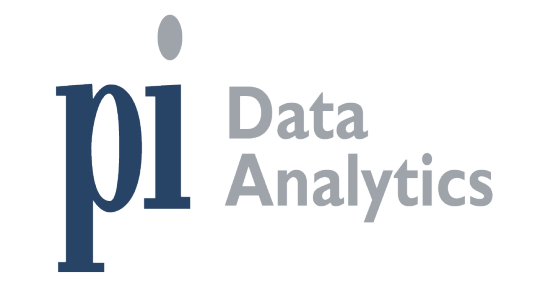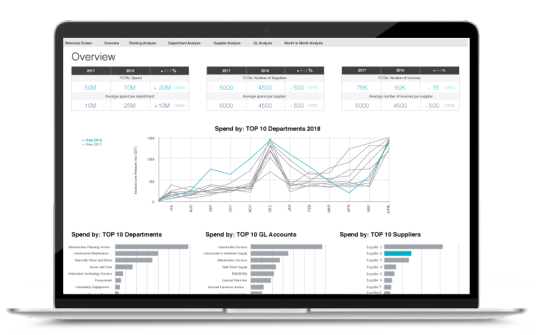Don't wanna be here? Send us removal request.
Text
5 Ways Gen AI is Changing Procurement

The rise of generative AI is reshaping procurement, making processes more efficient, accurate, and data-driven. Before diving into procurement data analysis, organisations must understand how AI-driven tools are enhancing decision-making and optimising operations. From automating supplier assessments to refining cost predictions, AI is transforming the way businesses approach procurement data analytics.
One major shift is in predictive analytics, where AI analyses patterns in procurement data to forecast future spending trends. This allows procurement data analysts to anticipate cost fluctuations and mitigate risks proactively. AI-driven insights also enhance supplier evaluations by assessing historical performance and identifying potential issues before they impact the supply chain.
Another significant impact is on data cleansing and classification. AI improves procurement data analysis by eliminating inconsistencies, categorising spend more accurately, and ensuring businesses can make well-informed purchasing decisions. With more reliable data, procurement teams can improve cost control and strengthen supplier relationships.
Contract analysis has also seen a transformation. AI-powered tools scan and analyse contracts for risks, compliance issues, and cost-saving opportunities. This helps organisations streamline contract negotiations and reduce legal exposure.
In procurement operations, AI enhances automation by handling routine tasks such as purchase order approvals and invoice matching. By reducing manual workload, teams can focus on strategic initiatives and supplier engagement, driving long-term value.
Finally, AI enhances procurement data analytics by identifying inefficiencies and suggesting cost-saving opportunities that may otherwise go unnoticed. With more precise insights, businesses can refine their purchasing index and optimise procurement strategies.
#PIDataAnalytics#PIAnalytics#ProcurementDataAnalyst#DataAnalyticsforProcurement#ProcurementDataAnalytics#ProcurementDataAnalysis#PurchasingIndex#pidataanalyst#pidata#pidatametricsaustralia#pidataanalysis#dataanalyticscompaniesinmelbourne#bigdataservicesmelbourne#melbournedataanalyticsplatform
0 notes
Text
Maximising Spend Transparency | Effective Strategies for Success

Gaining a clear understanding of your organisation’s spending is vital for improving financial decision-making. Spend analytics visibility involves analysing procurement data to identify trends, reduce waste, and uncover opportunities for cost-saving.
Here are some effective strategies to enhance your spend transparency.
Consolidate Data from Multiple Sources
Organisations often deal with data dispersed across various systems and departments. Consolidating this data into a single platform ensures better visibility and aids in uncovering hidden spending patterns. Consider adopting tools that provide centralised access to your procurement and financial data.
Categorise Expenditure for Clarity
Proper classification of spend cube data is essential. Group expenses by categories such as suppliers, departments, and cost centres to gain a granular view of spending. This method highlights areas for optimisation and supports informed decision-making.
Implement Automation for Spend Analysis
Manual processes are time-intensive and prone to error. Investing in automation tools streamlines data collection and analysis, allowing teams to focus on strategic insights instead of administrative tasks. Automation also delivers real-time reports for timely action.
Engage Stakeholders Across Departments
Improving spend visibility requires collaboration across teams. Engage key stakeholders to align goals, share insights, and drive accountability in budget management. A united approach fosters an efficient procurement process.
Adopt Advanced Analytics Solutions Modern analytics tools from PI Data Analytics offer predictive insights and trend analysis, empowering organisations to forecast spending behaviours. These solutions also enable scenario planning to prepare for market fluctuations and economic challenges.
#SpendCube#ProcurementCostSavings#SpendCubeSoftware#ReduceProcurementCosts#ProcurementCostReductionStrategies#spendcubeanalysis#whatisaspendcube#procurementspendcube
0 notes
Text
Why Benchmark Your Procurement Function?

Benchmarking your procurement function is an essential step in driving continuous improvement and maximising efficiency. By measuring your procurement performance against industry standards, you can identify areas of strength and areas that need improvement. Procurement benchmarking provides businesses with valuable insights, enabling them to make data-driven decisions that enhance procurement strategies and deliver cost savings.
Procurement benchmarking services are designed to help businesses compare their procurement processes, supplier performance, and purchasing strategies to the best in the industry. This comparison provides a clear understanding of how your procurement operations stack up, helping to pinpoint specific opportunities for growth and optimization.
In addition to overall procurement performance, procurement category benchmarking helps you assess the effectiveness of specific procurement categories. Whether you are dealing with direct or indirect spend, benchmarking by category provides insights that can guide more targeted cost-saving strategies.
The value of procurement benchmarking data cannot be overstated. It allows businesses to track procurement performance over time, helping to refine processes and adopt best practices. Regular benchmarking ensures that procurement teams remain aligned with industry standards, keeping them competitive and efficient.
By implementing benchmarking in procurement, businesses can also develop a deeper understanding of supplier relationships, uncover opportunities for negotiation, and identify cost-effective sourcing strategies. Working with procurement benchmarking companies allows organisations to benefit from external expertise, ensuring that they stay ahead of industry trends and optimise procurement processes accordingly.
For companies looking to improve their procurement function, PI Data Analytics offers advanced solutions for procurement benchmarking. With accurate and up-to-date data, businesses can make informed decisions that drive procurement excellence.
#ProcurementBenchmarking#ProcurementBenchmarkingServices#ProcurementBenchmarkingCompanies#ProcurementBenchmarkingData#ProcurementCategoryBenchmarking#benchmarkinginprocurement
0 notes
Text
Understanding Procurement Analytics: A Complete Overview

Procurement analytics involves the use of data-driven insights to improve purchasing decisions, reduce costs, and enhance supply chain performance. By leveraging advanced tools and techniques, procurement data analysts help businesses make informed decisions based on historical and real-time data. PI Data Analytics specialises in providing tailored solutions that enable organisations to unlock the full value of their procurement data.
Data analytics for procurement helps organisations uncover patterns and trends that can influence strategic purchasing decisions. PI Analytics offers a detailed view of procurement activities, empowering companies to track spending, evaluate supplier performance, and predict future needs. With PI Data Analytics’ expertise, businesses can make smarter choices, reducing risks and maximising efficiency.
At the heart of procurement data analysis is the Purchasing Index, which provides companies with benchmarks for assessing procurement performance. PI Datametrics Australia is renowned for helping companies evaluate their procurement health through insightful analysis. By integrating procurement data with tools from data analytics companies in Melbourne, like PI Data, companies can access big data services that lead to actionable insights.
Data analytics for procurement is no longer just about tracking spending. It involves identifying trends, optimising supplier relationships, and making data-backed decisions that improve operational efficiency. With PI Data Analytics, companies can access cutting-edge analytics tools designed to improve procurement processes.
#PIDataAnalytics#PIAnalytics#ProcurementDataAnalyst#DataAnalyticsforProcurement#ProcurementDataAnalytics#ProcurementDataAnalysis#PurchasingIndex#pidataanalyst#pidata#pidatametricsaustralia#pidataanalysis
0 notes
Text
Brighton Smash Repairs | Brighton Panel Beaters | Car Repairs Brighton | Bayside Smash Repairs
Trust Bayside Smash Repairs for all your Brighton car repair needs. We provide expert service, ensuring your vehicle is restored to top condition after an accident.

#BrightonSmashRepairs#SmashRepairsBrighton#BrightonPanelBeaters#BrightonCarRepairs#CarRepairsBrighton
0 notes
Text
Steps to Implementing a PI Data Analytics Strategy in Your Organisation
Developing a PI Data Analytics strategy within your organisation can significantly enhance decision-making, streamline processes, and improve overall performance. Implementing an effective data analytics strategy requires careful planning and execution. Here’s how you can get started.
Identify Objectives: The first step is to define clear goals. What do you want to achieve with data analytics? For example, Procurement Data Analysts often focus on optimising supplier performance or reducing costs. Clearly outline the areas that data analytics will address.
Collect Relevant Data: Once your objectives are clear, focus on gathering the right data. Ensure that your data sources are reliable and accurate. In procurement, this could include data from supplier contracts, purchase orders, and financial transactions.
Choose the Right Tools: Select analytics tools that align with your organisation's needs. A comprehensive Data Analytics for Procurement solution can help you analyse procurement patterns, supplier performance, and cost efficiencies. These tools should offer visualisation features that make it easy to interpret results.
Build a Skilled Team: Having the right team in place is crucial. This includes data analysts and procurement professionals who understand both the technical aspects of data analytics and the practical requirements of procurement processes. Empowering a Procurement Data Analyst ensures that data is not only collected but also interpreted and acted upon.
Continuous Monitoring and Improvement: Implementing a data analytics strategy isn’t a one-time effort. You need to continuously monitor the data, review the outcomes, and make necessary adjustments to refine the strategy. Regular feedback loops will ensure that the analytics strategy remains aligned with organisational goals.
By following these steps, your organisation can develop an effective PI Data Analytics strategy that brings actionable insights to procurement processes and beyond.

#PIDataAnalytics#PIAnalytics#ProcurementDataAnalyst#DataAnalyticsforProcurement#ProcurementDataAnalytics#PurchasingIndex#pidataanalyst#pidata#pidatametricsaustralia#pidataanalysis
1 note
·
View note